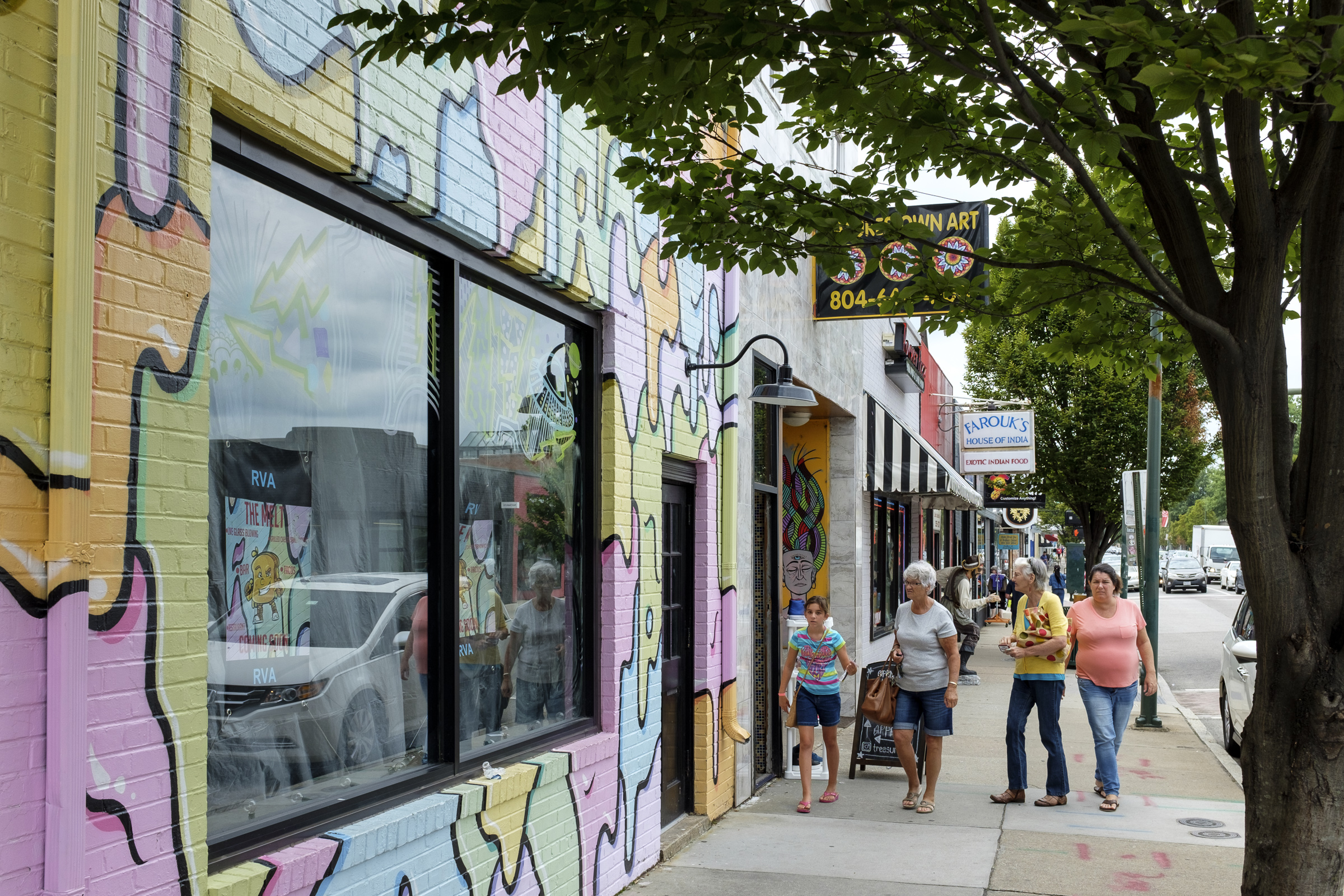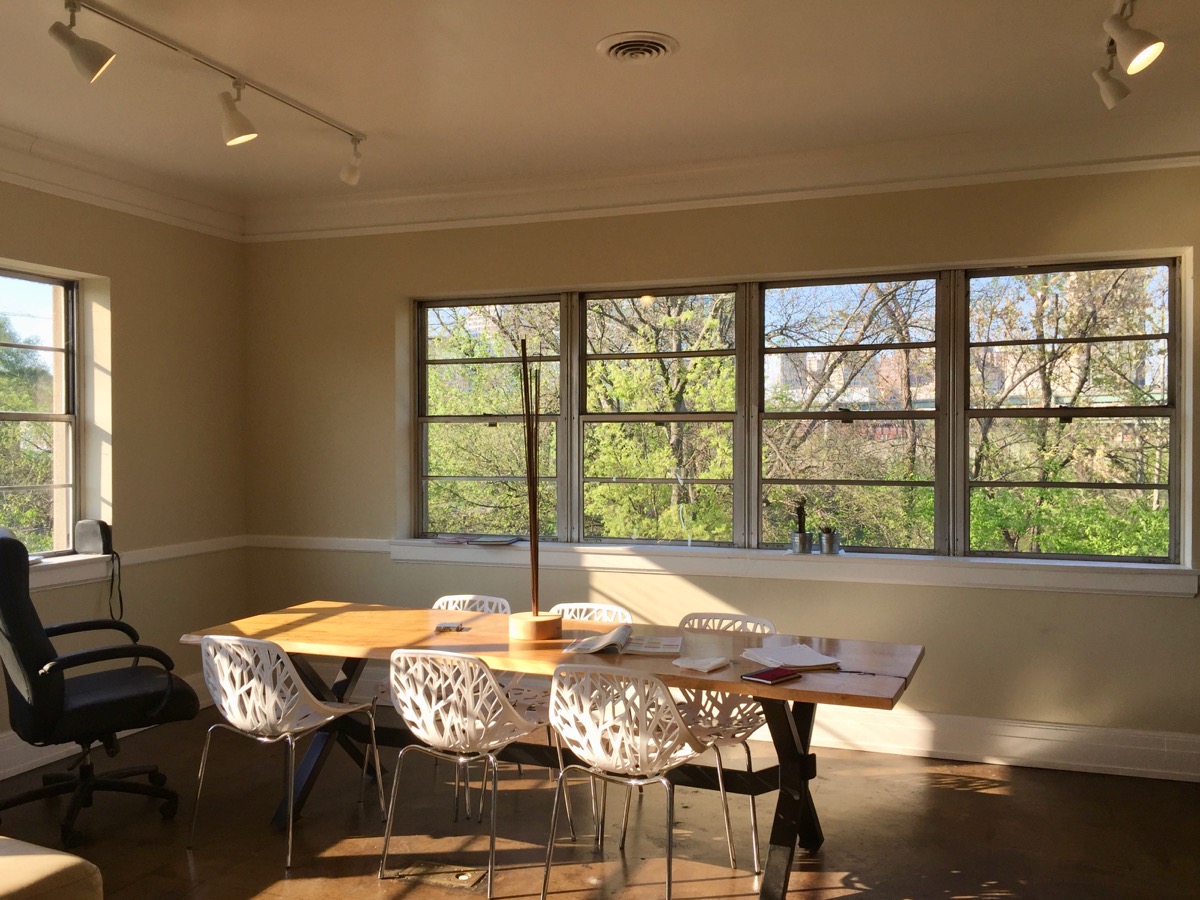Carytown里面排屋式的商铺设计。
Carytown是里士满市区内一个风格独特的购物街区。这一个街区在Fan居住区的西侧,并且也是传统意义上的里士满城市区域的边界。Carytown购物区的发展始于1938年,以Cary Court购物广场(Cary Court Shopping Center)的落成为标志。Cary Court购物广场在2001年被列入美国历史建筑名录,是一座单层的装饰艺术风格(Art Deco)建筑。该建筑带有方便的停车广场,以及整齐简洁的现代铝合金门框和商店橱窗。随着该广场的落成,更多的商铺在周边开始发展。最终,这个新兴的商业区连接了区域内另一座历史性的建筑 — Byrd影剧院,形成了如今的Carytown购物区。
Cary Court购物广场。
Carytown购物区拥有多元化的风格。这里有超过230间商铺,饭店以及精品店。著名的饭店名单里面包括了New York Deli,这间汉堡及熟食店开业于1929年,并且是著名的水手三明治(Sailor sandwich)的发源之地。另一个同样著名的饭店则是定位高端的Can Can Brasserie,是里士满里面最出名的法式餐馆。Carytown里数量众多的餐饮店铺也提供快餐,便餐,早午餐,茶饮,pizza和甜品等不同风格的服务。这些店包括了纸杯蛋糕店Carytown Cupcakes,地中海风格的餐馆Greek on Cary,快餐店Galaxy Diner,手工冰淇淋店Bev’s Homemade Ice Creams,pizza店Mellow Mushroom,以及著名的汉堡酒吧Citizen Burger Bar等。Carytown为数众多的精品店给人们提供了丰富的机会去寻找独特的家居饰品,服饰,唱片,礼物和玩具等。这里的精品店品种丰富,包括专卖设计品的二手店Clementine,唱片及音乐器材店Plan9 Records,地毯及家具店Ladles & Linens,礼品店Mongrel,以及非主流玩具店World of Mirth等等。这些风格友好的商店,开放式的排房,和餐馆,街头表演者,以及众多的其他体验活动一道,将Carytown购物区打造成了一个内容丰富多彩的地段。这里不仅是里士满居民的喜爱之地,同时也是众多游客慕名拜访的地方。
丰富多彩的涂装和墙绘。
Carytown也举办数个独有的年度节日。这里面最出名的两个是三月份的法国电影节(French Film Festival)和八月份的西瓜节。Carytown农贸市场在每个星期日的上午11点到下午3点开放,为大家提供本地的农产品和饮料等。
Byrd影剧院。
落成于1928年的 Byrd theatre(Byrd影剧院)拥有比Cary Court购物广场更早的历史。该影剧院是弗吉尼亚州内第一座在落成时就带有声音系统的影院。影剧院在上世纪70年代末成为了弗吉尼亚历史地标建筑,以及进入了美国历史建筑名录。该建筑的风格为意大利文艺复兴复活派(Italian Renaissance Revival)。影剧院自1928年开业起就未曾停业,全年放映电影。它主要放映处于第二档期的主流电影,成年人的票价为4美元,特殊活动如法国电影节等时候除外。影剧院里面还有一座著名的Wurlitzer管风琴,位于建筑的四楼,并且在每个星期六晚上都会进行演奏表演。
除了必须的维修和数字化投影更新外,Byrd影剧院的很多结构,座位和光照系统都维持了1928年落成时候的原样,包括了很多装饰艺术风格时期的独有元素。这些不寻常的元素包括了用于楼房清洁的中央吸尘系统(类似于中央空调,不过是吸尘机),以及在建筑里面引入的一道天然泉水,以用于早期的空调系统。影剧院仍然展示着当年纽约Arthur Brunet工作室设计的豪华内部装潢,包括了一座高18英尺,重2.5吨的主礼堂吊灯,上面装饰有超过5000枚水晶,以及超过500盏红色,蓝色,黄色和琥珀色的灯泡。根据本地市区传说,影剧院里面还有第一任经理Robert Coulter的幽灵出没,为这座建筑丰富的历史和故事加入了更多的色彩。
非主流玩具店World of Mirth和礼品店Mongrel。
风格各异的产品和细节。
位置:
2811-3600 West Cary Street
Richmond, VA 23221
United States
时间:
多数商店早上10点到下午6店开业,从星期一到星期六。
农贸市场开放时间为星期日早上11点到下午3点。
饭店和酒吧一般每天都开业。





































